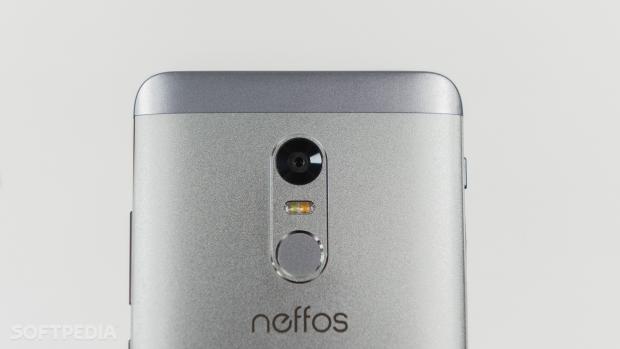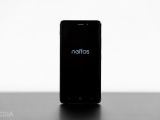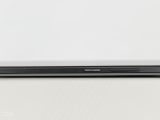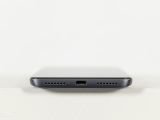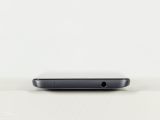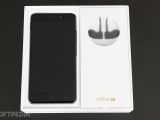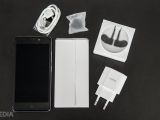| DESIGN | HARDWARE |
| SOFTWARE | CONCLUSIONS |
Neffos is a company you probably never heard of, but there’s a small detail that will certainly catch your attention: it is a brand owned by TP-Link, the more famous Chinese firm that builds nearly half of the wireless network devices sold across the world every year.
TP-Link is not a genuine phone manufacturer, so its know-how in the phone biz is more or less limited, with its past devices experiencing moderate sales to say the least.
The Neffos C5, C5 Max, and C5L arrived in January 2016 as the first models of the newly-established brand, and unsurprisingly, they failed to make themselves noticed in a world dominated by giants like Samsung and Apple.
With results clearly below expectations, TP-Link went back to the drawing board and returned in the fall of 2016 at IFA with the X1 and X1 Max, two new devices that are supposed to come with a series of novelties on the smartphone market in order to at least give some exposure to the brand.
Both the X1 and the X1 Max come in two versions, namely 2GB RAM and 16GB storage plus 3GB RAM and 32GB storage for the first and 3GB RAM and 32GB storage plus 4GB RAM and 64GB RAM for the latter.
The version we’re test driving today is the entry-level phone with 2GB RAM and 16GB storage, so it’s the most affordable configuration that you can buy.
DESIGN
“Everything is in the details.” This is the tagline that Neffos is using for the X1 and the X1 Max, and truth be told, both devices seem to be state-of-the-art phones. At least on paper. So first of all, let’s review TP-Link’s promises and then let’s have some hands-on time with the phone.
The device features a 5-inch screen that’s supposed to make it super-convenient to carry and hold in hand, and in order to provide the build quality that you’d normally expect from a more expensive phone, the manufacturer went for a unibody metallic body.
The back cover features an engraved dual-curved design, and Neffos says the company spent a considerable amount of time to get the degree of curvature right. If you ask us, the X1 reminds of the older HTC models, though Neffos says that it was particularly focused on the phone “perfectly fit in the palm of your hand.”
In terms of dimensions, the Neffos X1 series is dressed to impress, again at least on paper. It features narrow edges measuring only 2.75 mm and 0.6mm chamfer.
“Dressed to impress.”
The front fascia is obviously dominated by the display, with touch-based navigation controls at the bottom. The lock/power button and the volume rocker are placed on the right, while the SIM tray plus a mute toggle copied from the iPhone are on the left.
The back of the phone looks quite exquisite, with the camera and the fingerprint sensor placed at the center in a position that you can easily reach with any finger (hear that, Samsung?). The bottom of the phone holds the microphone and the speaker that are arranged symmetrically, with a USB-C port placed right in the middle.
As for the real-life experience, the Neffos X1 feels super-light in hand, also thanks to the small battery, but as for the rest of the details, you can hardly notice them. The innovative 0.6mm chamfer is barely noticeable, though you really appreciate it once you see it’s there, while the metal unibody design doesn’t feel as premium as you’d normally expect.
On the other hand, the back of the phone looks pretty nice, and we also liked the iPhone-like mute toggle which is particularly useful when trying to quickly switch the phone to silent.
HARDWARE
In terms of hardware, the Neffos X1 falls clearly in the mid-range category and the configuration it comes with delivers nothing more than performance you’d normally expect from such a device.
#Display
And it all starts with the display. The 5-inch full HD screen uses 2.5D glass which, according to the parent company, should provide “brighter, sharper, and more defined” image quality. In real life, however, image quality is decent and nothing more, while in direct sunlight, you barely see anything on the screen even if you set brightness to the maximum level.
The phone features a 76 percent screen-to-body ratio, which is quite an impressive score when holding the device in hand, especially because, at first glance, it doesn’t look like Neffos spent too much time to get rid of the bezels.
#CPU, RAM, storage
In order to keep the price as low as possible, TP-Link decided to go for a Helio processor, and not for the typical Qualcomm chips that are optimized for better performance. On the other hand, the Helio P10 octa-core chip (MT6755M 4xCortex-A53 1.8GHz + 4xCortex-A53 1.0GHz) provides decent performance, though it clearly shows its limits when running more demanding tasks.
One thing that’s worth taking into account is that overheating sometimes occurs even when running less demanding tasks, but we’ve noticed that the cooling system kicks in quite fast and cools down the device just as fast as it gets hot.
“The typical mid-range phone.”
In terms of memory, our review unit came with just 2GB and again, this is simply enough for browsing the web, chatting, or sending emails, but as you launch more apps or try to play games, it becomes more obvious that more memory is needed. There’s also a version with 3GB, and this should provide better performance, but it’s very clear that you shouldn’t expect it to be as blazing fast as a Samsung Galaxy S8, for instance.
For storage, you get 16GB for the entry-level configuration and 32GB for the one with 3GB RAM. 16GB is clearly not enough, especially because in reality you only get 10GB due to the pre-installed apps and the OS, so if you take a lot of photos and videos, buying a microSD card is absolutely mandatory. You can use up to 128GB microSD cards on the Neffos X1.
#Camera
The Neffos X1 comes equipped with a 13-megapixel rear camera that features a Sony IMX258 sensor with F2.0 and PDAF (Phase Detection Auto Focus).
On paper, it all sounds like a mid-range camera, but our experience with it provided mixed results.
For example, when taking larger shots of nature, as the one you can see below, the camera appears to provide a reduced amount of details, while also boosting saturation to a level that makes the shot look less natural. On the other hand, when shooting macro pictures, the level of detail is substantially improved, though you shouldn’t have big expectations here.
Motion shots are pretty much impossible, and shooting in low light brings up a prompt that requires you to keep the phone steady as the picture is optimized. The keyboard shot below shows the results of this optimization.
White balance is also sometime incorrectly adjusted, as the flower photo below. The only way to get this picture right was to switch to manual mode, as the automatic settings always ended in overexposure on the white objects.
#Battery
The first time we held the phone in hand, it impressed us with how light it was, and the battery is partially responsible for this. The device comes equipped with a 2250 mAh battery, which truth be told, is barely enough to get you through the day, especially if you’re a heavy user.
For typical tasks, like the ones mentioned above and including browsing, texting, and other standard tasks, the 2250 mAh battery has a hard time getting you through the day, and in almost every test, we ended up with the battery saver kicking in during the evening.
On the other hand, the phone features fast charging, so you get it recharged in record time, though we’d also go for a bigger battery and recharging during the night, rather than having to recharge it during the day and a smaller unit.
#Other features
The Neffos X1 comes with a super-fast fingerprint sensor which, according to the parent company, should unlock the phone in just 0.2 seconds during the “sophisticated algorithms” that are getting smarter as you use it. And truth be told, the fingerprint sensor is indeed fast, but we wouldn’t go as far as 0.2 seconds. Using it with a wet finger is impossible, though.
Other than that, you get the typical feature lineup for a modern smartphone, like GPS, a LED notification light, an ambient light sensor, dual SIM support, Bluetooth, and Wi-Fi.
Neffos makes no mention of water resistance, so it’s clear that it doesn’t feature an IP67 or iP68 rating, which means you should keep it away from liquids unless you want to buy a new one.
SOFTWARE
The Neffos X1 runs Android 6.0 and there’s no word from TP-Link on any ETA as to when the device could get the upgrade to Nougat.
The lightweight Android version that it’s running contributes to the overall fluid performance of the phone, though we’ve also spotted one weird lack of settings that you wouldn’t otherwise expect.
“Lightweight (almost stock) Android.”
The touch-based navigation buttons at the bottom of the phone do not light up when touching, and naturally, you’d expect such an option to be available in the settings menu. And yet, it’s not, which makes it pretty difficult to navigate, especially until you get used to it.
On the other hand, for Android users this shouldn’t come as a big surprise since it’s the standard configuration, but having an option to light up these controls would clearly come in handy.
Other than that, with small tweaks here and there, it’s almost stock Android, though it features a custom icon pack that’s not really eye-candy, but it’s not ugly either.
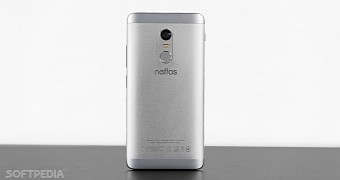
 14 DAY TRIAL //
14 DAY TRIAL // 